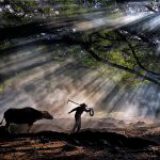Technology changes with time, but the fundamentals and recipes in photography remains. This article was first published in 2008, revised in 2018
“Lens distortion… desirable or unwanted?
I love it though!”
When I first started photography with film during my primary school days in the late 80s, I did hear of this lens call the 16mm fisheye. In those days, this is a very expensive lens which I can barely afford as a student. I gave it a miss. Now into the digital era, this lens came into my sight again in the form of a more affordable 10.5mm.
I was then building up my range of APSC lenses and I pondered whether to purchase this lens or not. I also wondered whether I should invest in a lens which will give distortion. I borrowed one from my friend and tried it for a week. I told myself, “Wow, wow, wow! I must get this lens.”
Even though I possess the superwide 12-24mm APSC lenses, the 10.5mm fisheye is a good complement as it has a wider coverage than the 12mm. Oh yes, just to clear the myth of focal length, there is a difference between 10.5mm fisheye and a superwide angle 10mm lens. Difference being, for a super wide angle 10mm lens, it has less angle coverage than the 10.5mm fisheye lens. We also do not experience the barrel distortion as seen in the 10.5mm fisheye lens.
According to Wikipedia, the apparent effect of the fisheye lens is that of an image being mapped around a sphere. Fisheye lenses use this type of distortion as a way to map an infinitely wide object plane into a finite image area, hence the 10.5mm fisheye lens can provide more coverage than a normal super wide angle 10mm lens. Hence, the word “fisheye” on the lens make it a whole lot of difference.
And yes, we are also seeing the way how fishes look at things with their bulging eyes. Their wide coverage of sight allows them to detect predators in the surroundings.
In very tight areas, the fisheye lens helps to cover most of the scene, especially in confined areas or small alleys. At the same time, with a focal length of 10.5mm, one can easily minimize camera shake since the minimum shutter speed to minimize camera shake is 1/10 of a second in this case. (The minimum shutter speed to minimize camera shake is 1/focal length.) This will mean that shooting with this lens in low light conditions or even night photography without a tripod is not impossible with the help of a higher ISO.
Some tips:
- It is important to note the degree of distortion when you tilt the camera upwards and downwards.
- Usually, the central area of the frame has less distortion, hence try to avoid placing your main subjects outside the central area of the viewfinder.
- This lens does not allow the use of a UV or skylight filter to protect the lens, hence special care is needed to avoid grease or thumb prints on the lens. Do standby a lens pen or lens tissue. But the wonderful angle which this lens provides is worth the effort.
The fisheye lens is versatile. Used adequately, it can even be used for shooting architecture, landscape, portrait and daily scenes. With the tips above in mind as well as the case studies below, enjoy yourself in playing with the distortion.
Positioning of the angle
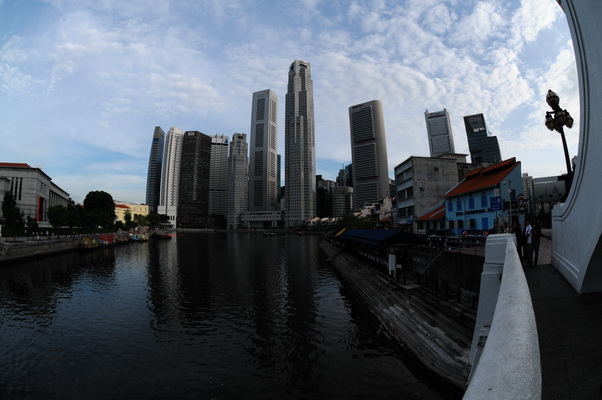 |
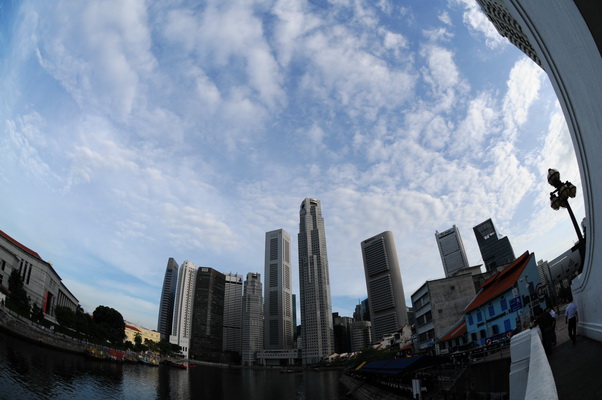 |
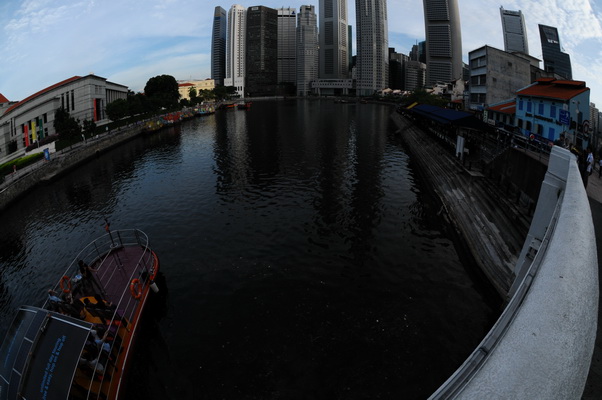 |
| At level position | Camera tilted upwards | Camera tilted downwards |
| Do take note of the distortion when you tilt the camera upwards and downwards. At eye level, barrel distortion is seen in region off the centre of the image. When the camera is tilted upwards or downwards, the horizon became distorted. If used creatively, this sort of distortion can sometimes lead to some stunning shots. | ||
Comparing with the other focal lengths
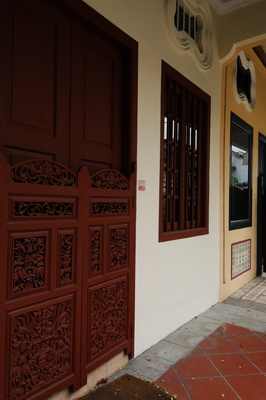 |
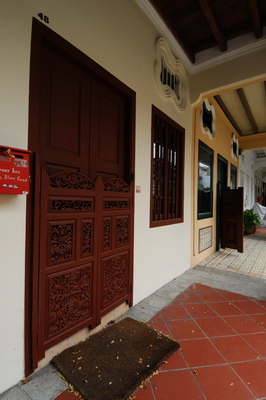 |
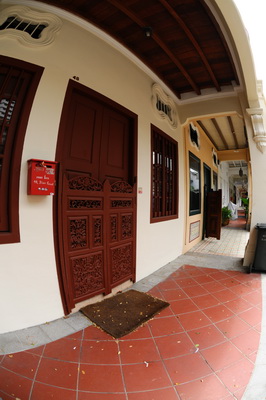 |
| From left to right: shot with APSC 18mm focal length, 12mm focal length and 10.5mm fisheye | ||
| The above 3 pictures are taken with 3 different focal lengths. The 12mm lens shows more coverage than the 18mm focal length. The 10.5mm fisheye reveals more of the surrounding amidst the lens barrel distortion, which can sometime make the picture look different from an ordinary undistorted shot. | ||
Portrait or Landscape Orientation
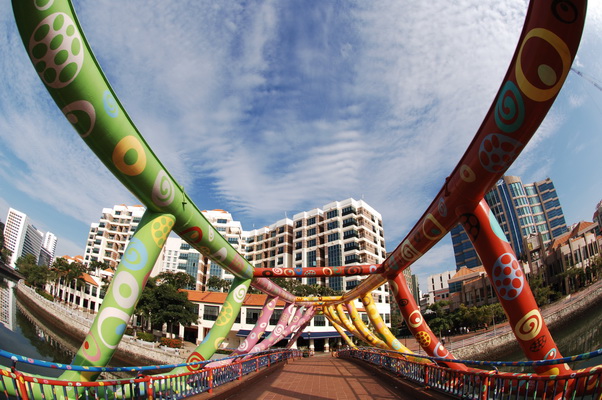 |
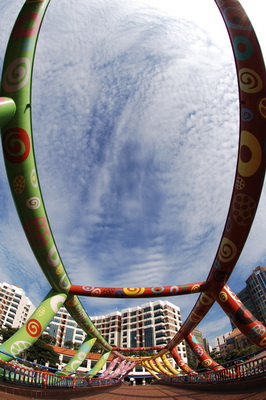 |
| Shot at the Singapore River, trying out this shot with a portrait and landscape orientation can yield very different visual effect. But do take note in keeping your balancing act, as looking at the distorted image through the view finder can at times make you lose your foothold. | |
Region of less distortion
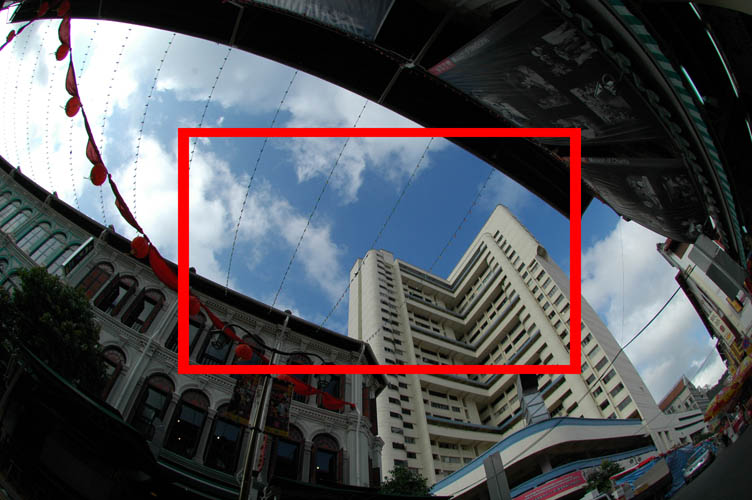
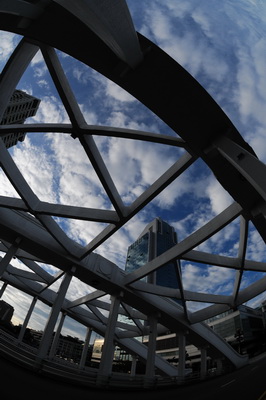
Centre Weighted metering, Daylight White Balance, ISO400, Program Mode, Shutter speed 1/640s, Aperture f13, 10.5mm fisheye
The dramatic clouds in the sky overlooking the top of the bridge are well covered by the fisheye lens. The usual 18mm lens is not wide enough to cover such a magnificent view. Careful adjustment of the angle is needed to ensure that my main subject, which is the building, is not distorted.
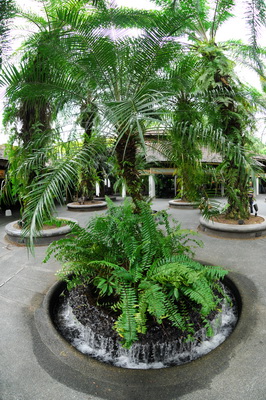
Centre Weighted metering, Daylight White Balance, ISO200, Program Mode, Shutter speed 1/100s, Aperture f5, 10.5mm fisheye
The extremely wide coverage exhibited by the fisheye lens allows me to shoot this picture while standing about 1 metre from the fountain in the front, and yet able to cover so many fountains in the background. I have to be careful not to shoot my shoes as I tiled the camera downwards. If I were to use the 18mm lens, I would have to shift myself much further away from the fountain in front to get this coverage.
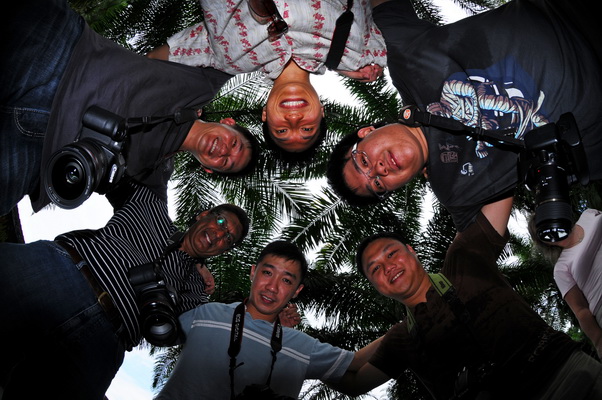
Centre Weighted metering, Daylight White Balance, ISO200, Program Mode, with built-in flash fired, Shutter speed 1/250s, Aperture f10, 10.5mm fisheye
Taken and published with the permission of my photography students, we experimented with this group shot. I call this the “circle of life”. I joked with my students that this picture will be better off if all of us were in some tribal costumes with feathers on our head.
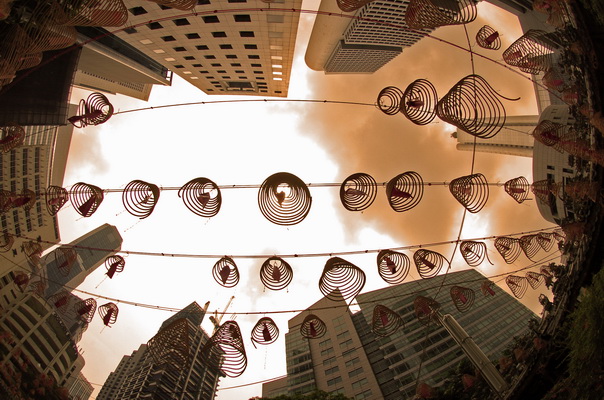
Matrix metering, Daylight White Balance, ISO200, Program Mode, Shutter speed 1/500s, Aperture f11, 10.5mm fisheye
I lay on the ground shooting skywards. The fisheye lens wrapped the surrounding buildings within its frame coverage.
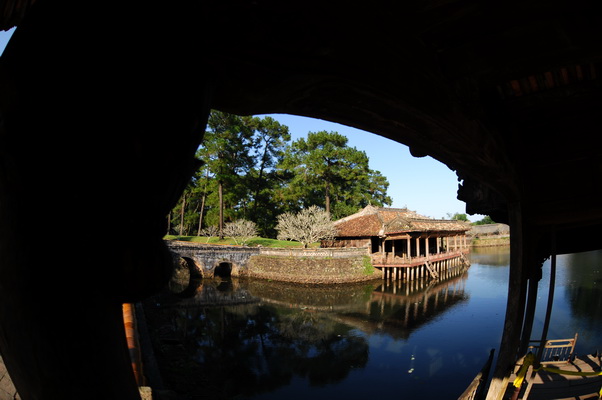
Matrix metering, Daylight White Balance, ISO200, Aperture Priority Mode, Shutter speed 1/640s, Aperture f4, 10.5mm fisheye
The fisheye lens exaggerated the framing effect of the shelter, giving it much distortion. I have to carefully position my angle so that the main subject (the building on stilts) is not distorted.
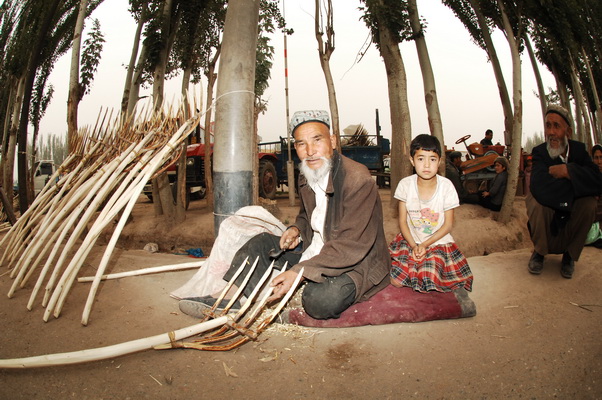
Centre Weighted metering, Daylight White Balance, ISO500, Program Mode, Shutter speed 1/250s, Aperture f9, flash fired, 10.5mm fisheye
Fisheye lens can also be a candidate for a photographer’s choice of lens to shoot portraits and street scenes if used carefully. No digital touch up was used to get this vignette effect (darkening of areas surrounding the old man and the kid). The flashlight coverage is not as wide as the fisheye lens coverage, hence when the flashlight is used with the fisheye lens, the vignette effect is inevitable. Though this is undesirable in traditional theory, but somehow it can at times give quite interesting effect to draw attention to the subject. I call this “flash vignetting”
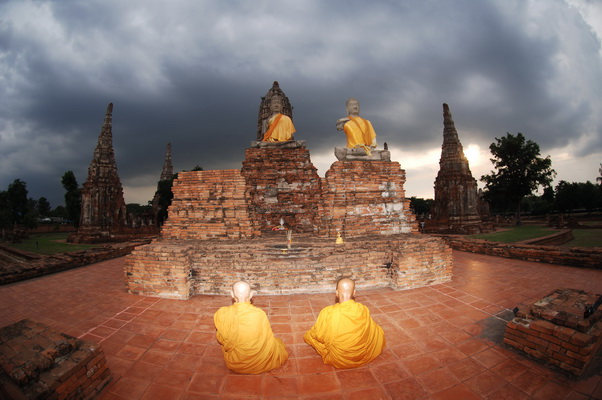
Matrix metering, Daylight White Balance, ISO100, Aperture Priority Mode, Shutter speed 1/250s, Aperture f3.5, flash fired, 10.5mm fisheye
Another example of the flash vignette effect created when the fisheye lens was used with the flashlight. The dramatic clouds added more visual impact to the image.
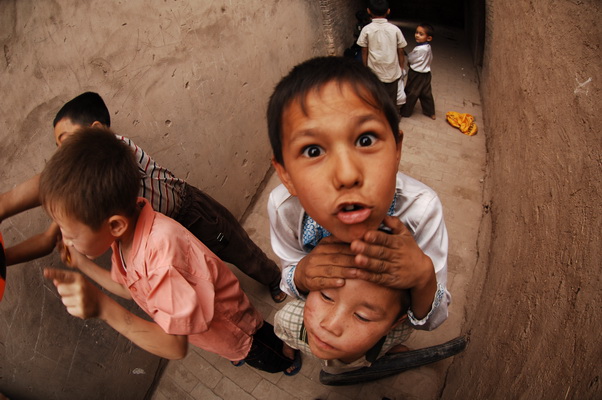
Centre Weighted metering, Daylight White Balance, ISO160, Program Mode, Shutter speed 1/60s, Aperture f4, 10.5mm fisheye
Shot in the narrow alleyway, the fisheye lens proved its worth. As usual, place the main subject near the centre of the frame and then appreciate the art of controlling distortion in the surrounding.
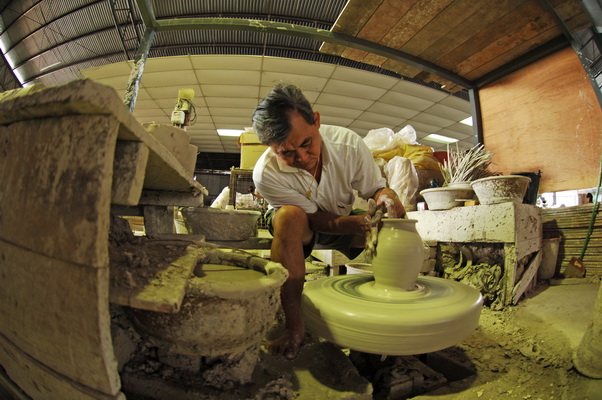
Centre Weighted metering, Daylight White Balance, ISO400, Aperture Priority Mode, Shutter speed 1/15s, Aperture f3.5, 10.5mm fisheye
Low light photography can be a challenge if you do not have the space to position a tripod. This is when super wide angle lenses will be put in good use. The fisheye lens with the 10.5mm focal length enabled me to shoot handheld with a shutter speed of 1/15 s without camera shake. Well, I did of course ask the artiste not to move his body too much.
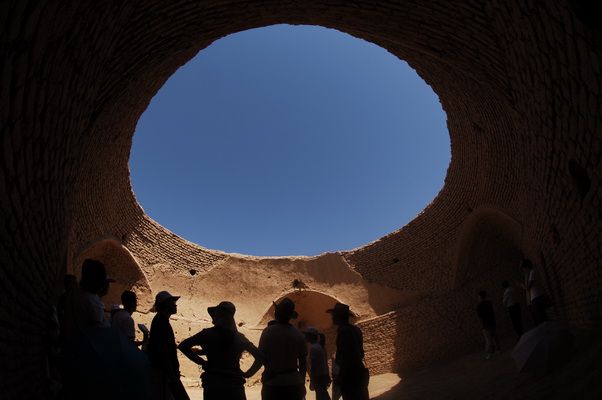
Centre Weighted metering, Daylight White Balance, ISO100, Aperture Priority Mode, Shutter speed 1/500s, Aperture f7.1, 10.5mm fisheye
Shooting at an average temperature of 48 degree Celsius in Turpan, Xinjiang, China, having a good shade is very much desirable both for me as well as for my camera body. The hole on top caught my interest and I switched to using the fisheye lens. I was lucky that I have the tourists in the foreground who eventually become the main subjects in silhouette.
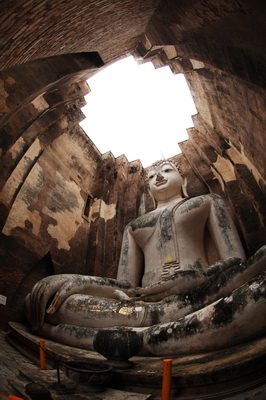
Matrix metering, Daylight White Balance, ISO200, Aperture Priority Mode, Shutter speed 1/350s, Aperture f4.5, 10.5mm fisheye
Very huge statue in a very tight enclose confinement. I had to lie on the floor and use the fisheye lens in order to get this shot. As usual, I have to be careful with the positioning of the angle to control the distortion.
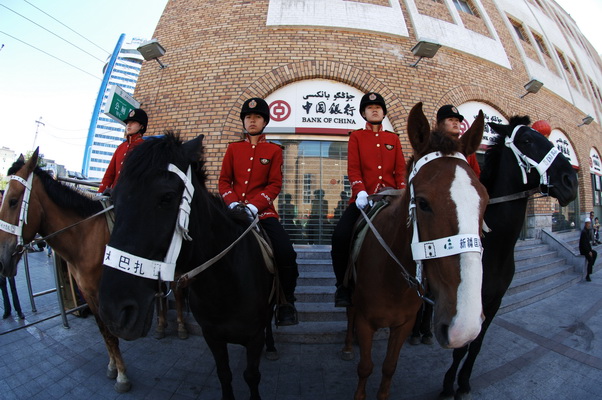
Centre Weighted metering, Daylight White Balance, ISO200, Aperture Priority Mode, Shutter speed 1/160s, Aperture f6.3, 10.5mm fisheye
I hardly see such a scene, bank security guards on horseback. Taken in Turpan, Xinjiang, China, the fisheye lens provided a wide coverage of the scene and the distorted faces of the horses look amusing.
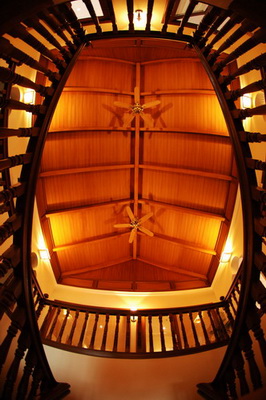
Centre Weighted metering, Daylight White Balance, ISO500, Aperture Priority Mode, Shutter speed 1/5s, Aperture f2.8, 10.5mm fisheye
Good use of the fisheye lens can also yield good effect for architectural shots. The old stairways and the roof looked appealing. While I enjoy the process of controlling the distortion, I also have to take note of maintaining the symmetry.
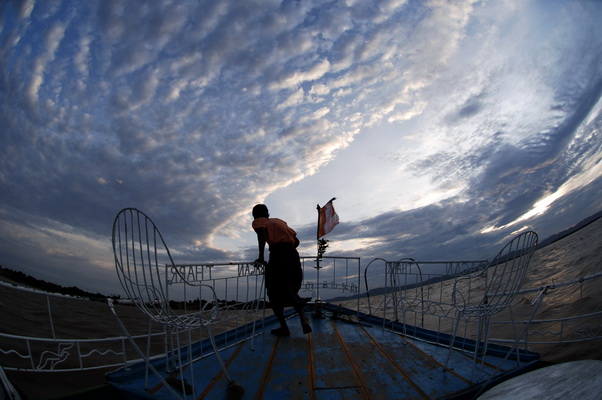
Matrix metering, Daylight White Balance, ISO100, Program Mode, Shutter speed 1/125s, Aperture f5.3, 10.5mm fisheye
Tired after a day of shooting, resting on the boat which will bring us back to the hotel. The clouds look great; the boatman assistant went to the front. Without hesitation, I pulled out my fisheye lens, fixed onto the camera body and fired away.
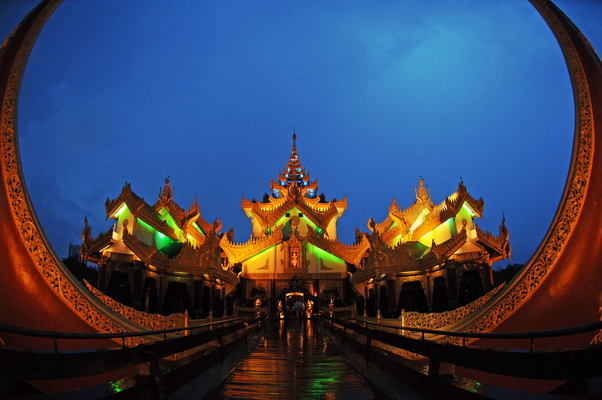
Matrix metering, Auto White Balance, ISO800, Aperture Priority Mode, Shutter speed 1/20s, Aperture f4, 10.5mm fisheye
The dark blue twilight sky was great. Well lit architecture. The distortion created by the fisheye lens made the curves more exaggerated.
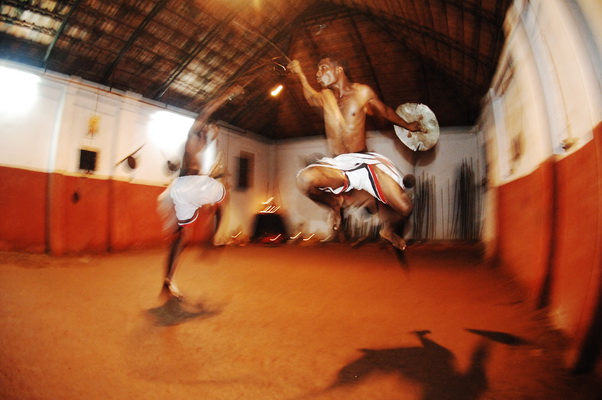
Matrix metering, Auto White Balance, ISO1600, Aperture Priority Mode, Flash fired, Shutter speed 1/13s, Aperture f2.8, 10.5mm fisheye
My movement was restricted for this shoot as we were confined within the 4 walls. The warriors were moving fast. The strokes were fierce and movement unpredictable. I was actually about 3 metres away from them. I had to use the fisheye lens to ensure that I have coverage of the 2 warriors. I used slow sync flash to create the flash with movement effect. High ISO was used to ensure that I get a faster shutter speed with the slow sync flash.


